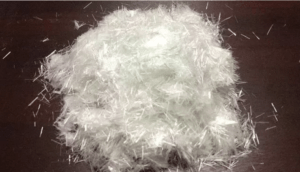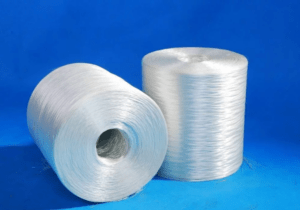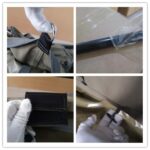

Glass fiber is a kind of inorganic nonmetallic material with excellent performance. There are many kinds of glass fiber. The advantages are good insulation, strong heat resistance, good corrosion resistance and high mechanical strength, but the disadvantages are brittle and poor wear resistance. It is made of glass balls or waste glass as raw materials by high temperature melting, drawing, winding, weaving and other processes, the diameter of its monofilament is several microns to more than twenty microns, equivalent to 1/20-1/5 of a hair, each bundle of fiber filament is composed of hundreds or even thousands of monofilament. Glass fiber is usually used as reinforced materials in composite materials, electrical insulation materials and thermal insulation materials, circuit board and other fields of national economy.
Main ingredients:
Its main components are silicon dioxide, alumina, calcium oxide, boron oxide, magnesium oxide, sodium oxide, etc., according to the amount of alkali content in the glass, can be divided into alkali free glass fiber (sodium oxide 0% ~ 2%, Aluminum-borosilicate glass), medium alkali glass fiber (sodium oxide 8% ~ 12%, sodium calcium silicate glass with or without boron) and high alkali glass fiber (sodium oxide more than 13%, sodium calcium silicate glass).
Glass fiber detection range:
Fiberglass cloth, fiberglass window screen, fiberglass board, fiberglass tube, fiberglass cotton, fiberglass yarn, fiberglass mesh, fiberglass tape, fiberglass silk, fiberglass mesh cloth, fiberglass felt, fiberglass products, fiberglass rod, fiberglass blanket, etc.
Glass fiber testing items:
Composition analysis, ignition point testing, appearance, mass per unit area, physical properties testing, tensile breaking strength, dissolvable harmful substances, density, ash, content testing, formaldehyde release, quality testing, chemical properties testing, etc.
Glass fiber testing standards:
GB/T 4202-2007 Glass fiber product code;
GB/T 18374-2008 Reinforced materials terms and definitions;
AAMA 305-2006 Recommended specification for Glass fiber reinforced Thermosetting Plastics Profiles;
AS 4748-2001 Sound emission test of glass fiber insulated trusses on lifting platform;
JC 521-1993 Glass sphere energy consumption grade quota;
JC 570-1994 energy consumption rating of glass fiber yarn.




